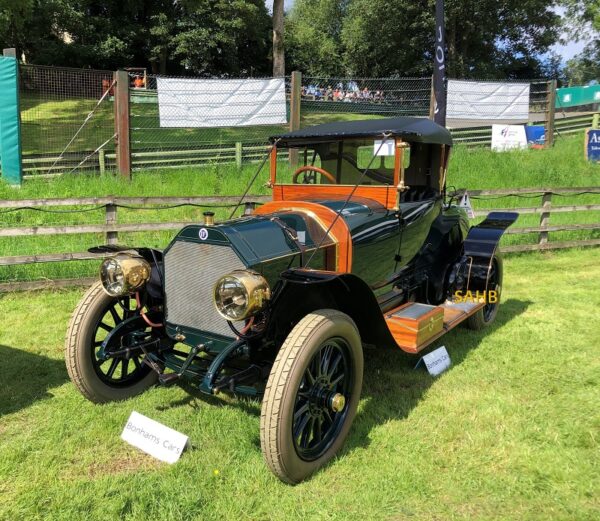
Cesare Isotta and Vincenzo Fraschini of Milan started importing Mors and Renault cars and Aster engines into Italy in 1899, and in 1900 founded Società Milanese Automobili Isotta, Fraschini & C. At that time their stated aim was simply to “Import, sell, repair cars”. They did assemble cars – similar to Renaults in appearance and powered by Aster engines.
Designer Giustino Cattaneo joined the company in 1905 and introduced many new models. He would be responsible for all Isotta Fraschini’s designs from then until 1933 – although some important details, such as the remarkable gearboxes on the FE and FENC racing and sports cars can almost certainly be attributed to the young designer Stefanini.
Cattaneo’s first designs were all four-cylinder models. Sales grew, and by 1906 the company was second only to FIAT among Italian manufacturers – but with only 300 cars built against 1,800 from FIAT.
The car in our Snapshot was displayed at the August 2023 VSCC Prescott hill climb by Bonhams. It was advertised as a PM model, but that is unlikely. Its final transmission in definitely by chain (other photos we took conform this), which makes it a PMC. The PM was a shaft-drive car. The two models were, according to Anselmi’s Isotta Fraschini book, otherwise identical in all significant respects. The engine is a T-head, by 1911 becoming dated. Attempts were made to increase power, firstly by using a large displacement of 6,082cc from the four-cylinder engine with cylinders cast in pairs, and secondly by using extremely domed pistons in the hemispherical head, to give a relatively high compression ratio.
Although conceived as a sports model, commercial (for this read ‘van’) bodies were sometimes fitted. But this example carries elegant two-seat roadster coachwork by Carrozzeria Pavesi & Crespi of Milan. It also has a fine set of acetylene head- and taillights made by Fausto e Pietro Carello of Turin, the headlights being in a bullet style, very modern for 1911. The PM and PMC models were also stated by Anselmi to have four-wheel brakes – the front ones being operated by the handbrake – but close inspection of our own photos can find no evidence of this.
Isotta Fraschini is best known for its Tipo 8, introduced at the Paris Salon in 1919, a luxury car that was very popular with wealthy American customers. It also built aero engines from World War I onwards. It stopped making cars in 1949 and converted to the manufacture of marine engines. It merged with Breda Motori in 1955 and survived, making engines of various types, until 1999.







Leave a Comment